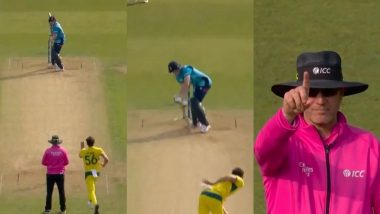“A rare opportunity, ladies and gentlemen. A charming bungalow on this beautiful tree-lined street..
.” The auctioneer gestures north and south, only to realise his gaffe. So too, the crowd, seeing a bank of parked cars, a set of nature strips, but not a tree in cooee.

Barely missing a beat, the agent adds, “Picture the trees, if you will.” I swear this story is true. Chris, my brother-in-law, shared the blooper as the auctioneer responsible.
He’s also the rellie to call me on occasion for synonyms of “opulent”, a euphemism for “poky”. Everyone is literate in real-estatese, from “old-world charm” (decrepit) to “charming” (weird), yet how fluent are you in civic code? Streets, roads, stroads? We need to decipher the spin of today’s city planners. Credit: iStock Street talk, in essence.
That lack of trees, say, would only be a problem if the property’s address went by the name of avenue, being “a broad roadway, usually planted with trees on each side”. Glades and groves are arboreal cousins. A drive, meanwhile, is where free-flowing cars should encounter few intersections.
Just as terraces, citing the Victorian government’s road-naming guidelines, imply “houses on either side raised above road level”. Similar principles prevail in NSW, where crescents ideally form boomerangs, parades imply footpaths, while courts and closes vouch for a dead-end. Just don’t expect such rules to be policed to the letter.
Rather, the intent lies in the paperwork. As for street-versus-road, the distinction is where the rubber hits the proverbial. Dr Liam Davies has devoted years to the discrepancy, a lecturer in Sustainability and Urban Planning at RMIT’s College of Design and Social Context.
As he puts it, “While the naming conventions may say that a road leads to a destination, and a street is a public roadway in a built-up area with buildings, the reality is that both often do both.” On paper, a street is a place, in contrast to a road’s corridor. In theory, we live in streets, and travel down roads.
Or movement funnels, to quote some documents. Parramatta Road, say, promises Parramatta the destination, echoing the Sydney pledge of Coburg’s Sydney Road. Or so runs the ideal.
Yet over time our urban sprawl has blurred the edges, creating a slew of misnomers that even a real estate agent can’t hide. In many cases, the confusion leads to a type of fusion, one that Davies outlined in a Conversation piece. “Maybe you’ve seen someone talking about a ‘loud, polluted, car-filled, unbearably hot, decaying concrete nightmare’ of a street.
Yep, that’s definitely a stroad.” Creepily, the dystopian love-child of street and road now boasts a name, one coined by US municipal engineer Charles Marohn in 2011. Neither efficient through-ways nor residential nooks, stroads fail at both.
Suburban futons, as Marohn explains, being neither couch nor bed, but lumpish in-between things. The late Alan Waddell traced umpteen stroads in his marathon of love, tramping every Sydney street and road after the death of his wife, Marjorie, in 2002. Scroll his Walk Sydney Streets to find tranquil roads and car-clogged streets, no-through-crescents or interconnected closes, the civic semantics shrinking in the rearview mirror.
Historic name-changing exists, as Davies discovered, such as Bourke Street Mall denoting a subsequent pedestrian precinct of Bourke Street proper, or the Hume Highway evolving into Freeway after its upgrade; however, such municipal fixes are few. Short of adopting stroad as a new designation, we citizens seem stuck with the aspirational labels of the past, obliged to decipher the spin of urban engineers as much as today’s auctioneers. To read more from Spectrum , visit our page here .
For subscribers: Get tips, tricks and word games from our crosswords guru, plus links to our online puzzles and quizzes, delivered to your inbox every Saturday. Sign up for our Puzzled with David Astle newsletter ..



















